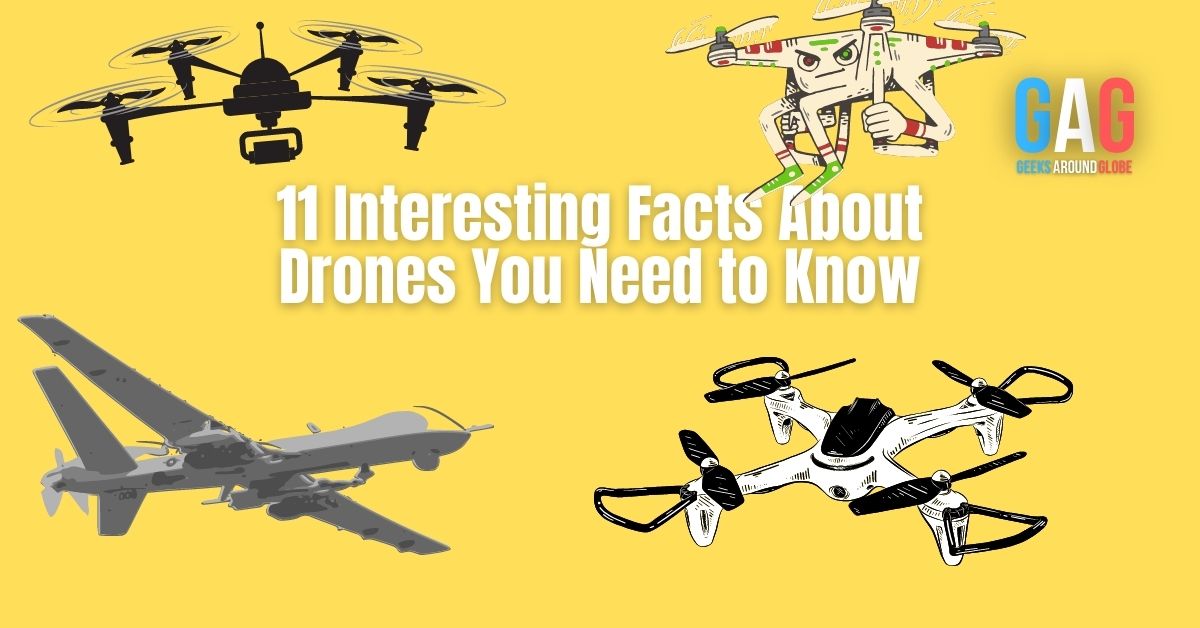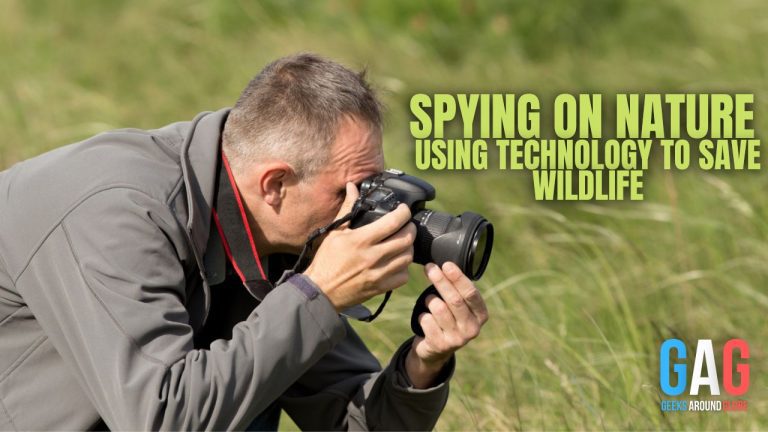While drones first started by helping the military, 79% of consumers have agreed that they would accept delivery by drones. They have come a long way from strictly military use to YouTube videos, surveying land for farmers and real estate, and delivering food to dangerous areas.
We have all seen the fantastic video footage captured by drones, but how much do you know about them?
Whether you are one of the 8% of Americans that own a drone or you are interested in buying one, this guide will show you some surprising facts about drones you should know.
What Is a Drone?
Drones were initially named unmanned aerial vehicles (UAVs) and are considered a type of aircraft piloted by someone who is still on the ground. They can also be pre-programmed to carry out different missions or deliveries.
Most people these days use drones for aerial photography, but the military can also use drones to gain access to dangerous areas. The police primarily use their drones for surveillance purposes.
They have also provided everything from major concert and football games coverage to assisting people after devastating natural disasters. Their uses are limitless and range from inexpensive and essential functions to costly and hi-tech.
Drones can fly in a pre-determined flight path, but they can also fly in circles or even hover in one spot.
How Do Drones Work?
Drone technology is easy to operate but complex inside when it comes to the mechanics and physics of making it fly as smoothly as possible. You can control them wirelessly from your smartphone or a controller that comes with it.
The components of a drone include:
- Frame
- Motors
- Battery
- Propellers
- Flight Controller
- Power Distribution Board
- Electronic Speed Controller
- Receiver
- Camera
If you experience any collisions, water damage, drop damage, signal interference, or user error, make sure to contact DJI Repair to get a free assessment. They offer a quick turnaround to get you back to flying a drone as quickly as possible!
Types of Drones
There are many different types of drones, depending on how you wish to categorize them. Drones can be grouped according to the model, size, flying range, and based on their equipment.
Types of Drones Categorized by Models
- Single Rotor – These drones consist of only one rotor and, because of this, resemble a helicopter.
- Multi-Rotor – As the name suggests, these drones have multiple rotors. These are the most common amongst hobbyists and professionals. They are typically available as Tricoptors, Quadcopters, Hexacopters, and Octocopters.
- Fixed Wing – These drones resemble airplanes, as they use their large, fixed-in-place wings to help lift the drone. These are not able to hover and are not used for taking aerial videos or photos.
- Fixed-Wing Hybrid – These types of drones are not typical, but they may start appearing later. They combine the vertical lift-off of the fixed-wing models with the hovering power of the models with rotors.
Types of Drones Categorized by Size
- Micro Drones – These drones are so small they can rest on your finger.
- Small Drones – Small drones are generally between 20-80 inches.
- Medium Drones – They may be considered medium, but they can weigh up to 440 pounds.
- Large Drones – The military typically uses large drones for surveillance and are not available to the general public because of their equipment and comparable size to a small aircraft.
Types of Drones Categorized by Technology
- GPS Drones – These drones can link to a GPS for mapping out their flight paths. These are especially helpful when delivering medicine or food to those in need.
- RTF Drones – Ready to Fly Drones are perfect for beginners because there is little to no setup. These are most commonly used by hobbyists and professionals alike since you only have to charge the battery before it is ready to go.
- Trick Drones – Trick drones are much smaller, usually only 10 inches, and are very light. Their small size allows them to do flips and other fun tricks in the air.
- Racing Drones – Racing drones are stripped of any excess features to remain as light as possible. These drones can reach speeds of 60 miles per hour!
Facts About Drones
Ready for some interesting facts about drones? They have evolved from their unique history with the military and are now commonly used by hobbyists and photographers to capture beautiful aerial photos and videos.
People find new ways every day to improve drone technology and use it to help with many different professions and aspects of our daily lives.
Let’s take a look at some interesting and perhaps, surprising facts about drones.
- Reginald Denny, actor and model-airplane enthusiast, was the first civilian to develop a UAV in 1935.
- The minimum age for legally flying a drone is 16 years old.
- Drones can send food and medicine to people in times of war or in the event of a natural disaster. A drone has even delivered insulin to someone in need on a remote island.
- Drones can help with farming by surveying the crops from above and allowing farmers to see which crops are damaged and which crops are ready to be harvested.
- Drones record photo and video footage of the SuperBowl games, as well as major concerts and festivals.
- The first military drone targeted Osama Bin Laden.
- Over 420,000 jobs for operating drones exist today and are constantly growing.
- Drones are becoming more and more popular recreationally, as many people use them to capture footage for their YouTube videos.
- While drone crashes are inevitable worldwide as drone usage increases, the Army is responsible for 70% of these crashes.
- There is a Drone Racing League (DRL), and they race each other’s drones around different tracks.
- Amazon announced that they are considering a future service called “Prime Air,” which will use drones to deliver packages in less than 30 minutes.
Drones Are Much More Than a Hobby
As you have seen, they are used as a hobby, of course, but also by many other professionals. Drones also support humanitarian missions, help the military and police, and help revolutionize farming.
While they are entertaining to fly, they are also extremely helpful in natural disasters or dangerous war areas. Drone technology is constantly evolving for the better, and companies and hobbyists alike are finding new ways to put drones to good use.
Did you find any of these facts about drones surprising? Browse our blog for more great content and interesting articles like this one.







